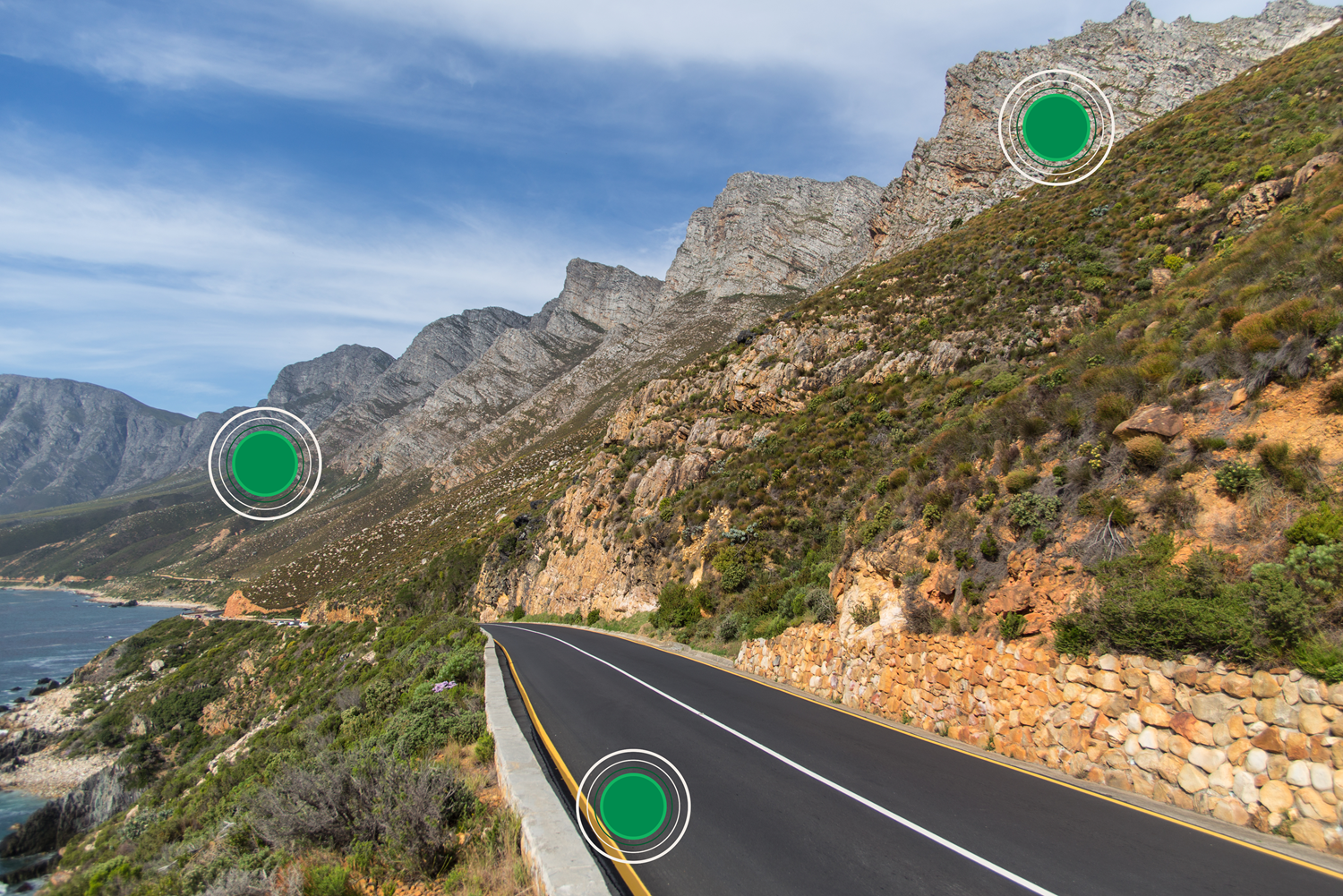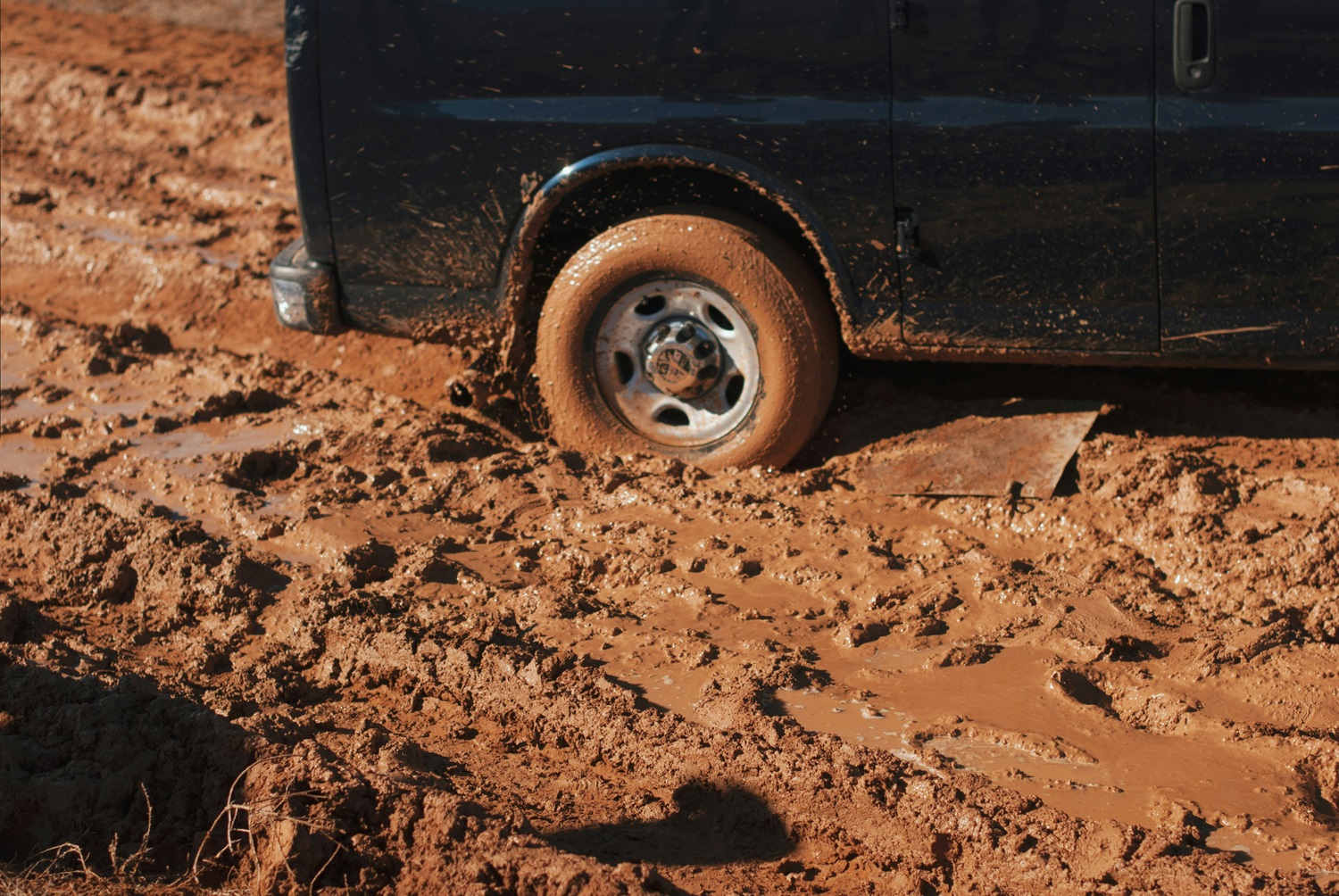
The impact of road conditions on vehicle performance
The impact of road conditions can significantly impact vehicle performance in different ways. This makes understanding how these conditions affect your vehicle crucial for maintaining its safety and efficiency. For those who spend a lot of time navigating challenging terrains such as gravel, muddy, or debris-covered roads, it is essential to know how it affects your vehicle. If you don't know how to check for problems with your vehicle, DEKRA has the answer. A Condition Report provides a comprehensive evaluation of your vehicle's key components, identifying hidden damage your vehicle might have sustained. Prolong the life of your car and drive with confidence by scheduling a DEKRA Condition Report today. Click/tap here to find a branch near you.
Let's take a look at the various road conditions you might face and what kind of impact they could have on your vehicle's performance.
1. Tar Roads
A tar road, also known as a paved or asphalt road, is a smooth, stable driving surface made from a mixture of bitumen and aggregate materials. These roads are commonly found in urban areas and on highways and main roads.
The Impact on Vehicle Performance
- Increases the risk of skidding or hydroplaning in wet conditions due to reduced traction
- Can cause tyre wear over time, especially if the road has frequent sharp turns or heavy traffic
- Potential for hidden road damage, such as potholes or cracks, leading to sudden impacts and vehicle damage
- Accumulation of oil and debris on the surface can reduce traction and make the road hazardous
- Heat retention from asphalt can elevate tyre pressure, potentially causing blowouts and reducing tyre lifespan

Photo credit: Wayne de Klerk on Unsplash
2. Gravel roads
A gravel road is an unpaved road surface made of loose gravel, stones, and dirt, typically found in rural areas. They vary in smoothness and driving experiences depending on gravel size and maintenance.
The Impact on Driving Performance
- Increases wear and tear on the suspension system due to the rough and uneven surface
- Reduces traction and handling, especially at higher speeds, making the vehicle more prone to skidding and losing control
- Causes faster tyre wear due to the abrasive nature of gravel
- Increases the likelihood of small stones and debris causing damage to the undercarriage, tyres, and paintwork
- Reduces fuel efficiency because of higher rolling resistance and the need for more frequent braking and acceleration
- Can lead to dust accumulation in vehicle components, potentially causing issues with filters and other systems

Photo credit: Clint Patterson on Unsplash
3. Wet Roads
A wet road, caused by rain, mist, precipitation, or spillage, can significantly affect driving conditions and vehicle performance.
The Impact on Driving Performance
- Reduces traction, making it more difficult for tyres to grip the road, which can lead to skidding or hydroplaning
- Decreases overall handling and stability, especially during turns or sudden manoeuvres
- Requires slower driving speeds to maintain control
- May lead to more frequent use of windshield wipers and defoggers, potentially causing distractions for the driver

Photo credit: Angga Pratama on Unsplash
4. Icy Roads
As we continue to look at the impact of road conditions on vehicle performance, we must mention icy roads even though it's not as prevalent as the others here in SA. An icy road, often referred to as black ice when nearly invisible, forms from freezing rain, sleet or refrozen snow, and is extremely slippery. This can significantly impair vehicle control and safety.
The Impact on Vehicle Performance
- Drastically reduces traction, making it very difficult for tyres to grip the road, which increases the likelihood of skidding
- Significantly extends stopping distances, requiring more time and space to bring the vehicle to a complete stop
- Severely impairs handling and stability, making steering and controlling the vehicle challenging, especially during turns or sudden manoeuvers
- Increases the risk of losing control, leading to higher chances of accidents and collisions
- Forces drivers to reduce speed significantly and drive with extreme caution to maintain control
- Can cause mechanical stress on the vehicle's braking traction control system as it works harder to maintain stability

Photo credit: Amanda Sandlin on Unsplash
5. Muddy Roads
A muddy road is usually covered with wet, soft earth from heavy rainfall, flooding, or poor drainage. It varies in depth and consistency, creating challenging driving conditions that reduce traction and can bog down vehicles.
The Impact on Vehicle Performance
- Reduces traction, making it difficult for tyres to grip the road and increasing the likelihood of slipping and sliding
- Increases the risk of vehicles getting stuck, especially for those without four-wheel drive or off-road capabilities
- Decreases overall handling and control, requiring more cautious and slower driving to maintain stability
- Causes faster wear and tear on tyres and suspension components due to the abrasive and sticky nature of mud

Photo credit: Aubrey Odom on Unsplash
6. Sandy Roads
These road surfaces are covered with loose sand and are typically found in desert regions, coastal areas, or near sandy construction sites. The sand can vary in depth and consistency, creating challenging driving conditions.
The Impact on Vehicle Performance
- Reduces traction, making it difficult for tyres to grip the road and increasing the risk of sliding or fishtailing
- Increases the likelihood of vehicles becoming stuck, particularly for those without four-wheel drive or off-road capabilities
- Compromises handling and stability, necessitating slower speed and more careful driving to maintain control
- Accelerates wear and tear on tyres and suspension due to the abrasive nature of sand
- Obscures road marking and surface contours, making it more challenging to navigate and raising the risk of accidents

Photo credit: Kristaps Grundsteins on Unsplash
7. Flooded Roads
Flooded road surfaces are covered with standing or flowing water, typically due to heavy rainfall, overflowing rivers, or pool drainage systems. The depth of the water can vary, and it may hide underlying hazards such as potholes or debris.
The Impact on Vehicle Performance
- Reduces traction, increasing the possibility of hydroplaning and losing control of the vehicle
- Increases the risk of engine stalling or damage if water enters the engine or other critical components
- Obscures road conditions, making it difficult to see and avoid hazards like potholes, debris, or deep water
- Decreases braking efficiency, leading to longer stopping distances and a higher risk of collisions

Photo credit: Brian Wangenheim on Unsplash
8. Debris-Covered Roads
Debris-covered roads are littered with various types of detritus, such as fallen branches, rocks, litter, or remnants from construction or accidents. The debris can vary in size and type, creating a hazardous driving environment.
The Impact on Vehicle Performance
- Increases the risk of tyre damage or punctures, leading to potential blowouts or flat tyres
- Reduces traction and control, especially if the debris causes the vehicle to swerve or lose grip, which can cause accidents or collision
- Can cause damage to the undercarriage, suspension, and other components if larger debris is struck
- May obstruct visibility, making it difficult to see the road ahead and react to other hazardous materials

Photo credit: Franz P. Sauerteig from Pixabay
9. Potholes
Potholes are depressions or holes in the road surface caused by wear and tear of traffic and weather conditions. They can vary in size and depth, often appearing suddenly and posing a hazard to vehicles
The Impact on Vehicle Performance
- Causes significant damage to tyres and wheels, leading to potential blowouts or bent rims
- Increases wear and tear on suspension and alignment, resulting in a rougher ride and the need for more frequent maintenance
- Can damage the undercarriage, including exhaust systems and oil pans, especially on larger potholes
- Reduces overall vehicle stability and control, as sudden jolts from hitting potholes can cause loss of control
- Forces drivers to swerve or brake suddenly, increasing the risk of accidents and collisions

Photo credit: Ian Taylor on Unsplash
10. Rocky Terrain
This terrain is covered with rocks, boulders, or uneven stone formations. Rocky surfaces are typically found in mountainous or remote areas and present significant challenges for vehicle navigation due to their irregular and rugged nature.
The Impact of this Road Condition on Vehicle Performance
- Reduces traction and stability, making it difficult for tyres to maintain grip and increasing the risk of skidding
- Increases wear and tear on tyres and suspension, leading to potential damage and the need for more frequent maintenance
- Can cause significant undercarriage damage, as rocks and boulders can strike or scrape the vehicle's bottom components
- Requires lower speeds and careful navigation, necessitating increased driver attention and control to avoid hazards
- Increases the likelihood of mechanical failures, such as broken axles or shocks, due to the extreme stress placed on the vehicle's components

Photo credit: Joshua Whitney on Unsplash
11. Steep Inclines
A steep incline rises sharply in elevation over a short distance. These inclines can be found in hilly, mountainous regions and require vehicles to exert more power to climb and control speed while descending.
The Impact on Vehicle Performance
- Increases engine strain and fuel consumption, as more power is required to ascend the incline
- Challenges braking systems, which must work harder to control speed and prevent overheating during descents
- Reduces overall vehicle stability, especially for heavy or poorly balanced loads, increasing the risk of tipping or rolling back
- Requires frequent gear changes, demanding more from the transmission system to maintain appropriate power and control
- Can cause increased wear on tyres, due to the added stress of climbing and descending, especially under heavy loads

Photo credit: Tommy De Giorgio on Unsplash
12. Sharp Turns
A sharp turn is a section where the direction changes abruptly, requiring drivers to significantly reduce speed and steer carefully to navigate safely. These turns are commonly found on winding roads, mountain passes, and in urban areas with complex street layouts.
The Impact on Vehicle Performance
- Reduces traction, increasing the risk of skidding or losing control, especially at higher speeds
- Challenges steering and handling, requiring precise control and quick adjustments to navigate the turn safely
- Increases tyre wear due to the increased friction and stress on tyres during the turn
- Requires careful speed management, as entering the turn too fast can lead to understeer or oversteer
- Can cause mechanical stress, particularly on the suspension of steering systems, due to the sudden change in direct and force

Photo credit: Jim Wilson on Unsplash
The Importance of a DEKRA Condition Report
It's easy to ignore the impact of road conditions on vehicle performance when you don't immediately see the consequences of the constant wear and tear. If you drive on any of the above-mentioned types of roads, when was the last time you had your vehicle inspected?
A DEKRA Condition Report evaluates the current state of a vehicle, covering key areas such as the engine, transmission, suspension, brakes, tyres, and bodywork. It involves a thorough inspection by certified technicians who use advanced diagnostic tools to identify any existing or potential issues.
5 Reasons to Get a DEKRA Condition Report
- Identify Hidden Damage: Road conditions like potholes, gravel roads, and rocky terrain can cause hidden damage to a vehicle's undercarriage, suspension, and tyres, which a DEKRA Condition Report can reveal
- Ensure Safety: Wet, icy, and muddy roads can impact the performance of brakes and tyres. The report checks that these critical components are in good condition, ensuring safe driving
- Avoid Costly Repairs: Regular exposure to harsh road conditions like the ones mentioned above accelerates wear and tear. The report helps identify issues early, preventing expensive repairs in the future.
- Maintain Resale Value: A detailed condition report assures potential buyers of the vehicle's upkeep despite exposure to varied road conditions, helping maintain its resale value
- Peace of Mind: Knowing that the vehicle has been thoroughly inspected and certified by DEKRA provides peace of mind to the owner, especially when driving on challenging road surfaces
The impact of road conditions on your vehicle's performance cannot be overstated. Whether you're frequently driving on tar roads, gravel paths, or navigating rocky terrain, it's essential to understand how these conditions affect your vehicle. Regularly assessing your vehicle's health ensures its longevity and your safety on the road. For those who spend considerable time driving on such challenging surfaces, getting a DEKRA Condition Report is a smart and proactive measure. Our comprehensive evaluation will identify any hidden issues, provide peace of mind, and help maintain the value of your vehicle. Schedule your DEKRA Condition Report today and drive with confidence knowing your vehicle is in top condition.